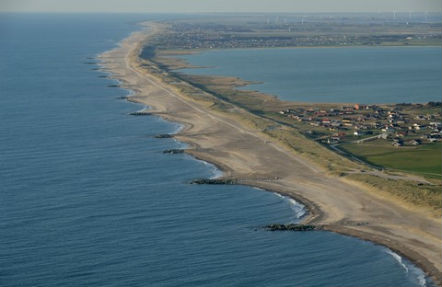Coastal protection
All forms of coastal protection to some degree or other have an impact on natural processes along the coast. Therefore, coastal protection works should be as natural as possible and integrated into the landscape. Finally, they should be technically optimal. A technically optimal solution could be a combination of several coastal defence solutions. No two coastlines are the same. Therefore, it is important that local conditions concerning waves, wind, sediment transport, water depth, etc., are taken into account when planning and designing the coastal protection works.
There is a distinction between, on the one hand, protection against erosion, which includes shore/beach nourishment, breakwaters, cliff and slope defences, groynes and sand dunes, and, on the other hand, protection against rising sea levels, which includes dikes and mobile and permanent quay walls.
The establishment of solid structures such as groynes, breakwaters and cliff and slope defences, usually results in problems further down the coast, because the sediment collected by groynes and breakwaters, and the sediment blocked from the sea by cliff and slope defences will be lost further down the coast. Solid structures intervene with the dynamics of nature and lead to erosion and coastal recession downstream.
Solid structures can reduce but not stop erosion and recession of a vulnerable coastline. However, by feeding the shore with sand, pebbles or similar, erosion and recession of the coast can be curbed, because sand, the natural material removed from the coast by the forces of the sea, are artificially returned to the coastline.

Senest redigeret:
04-02-2014